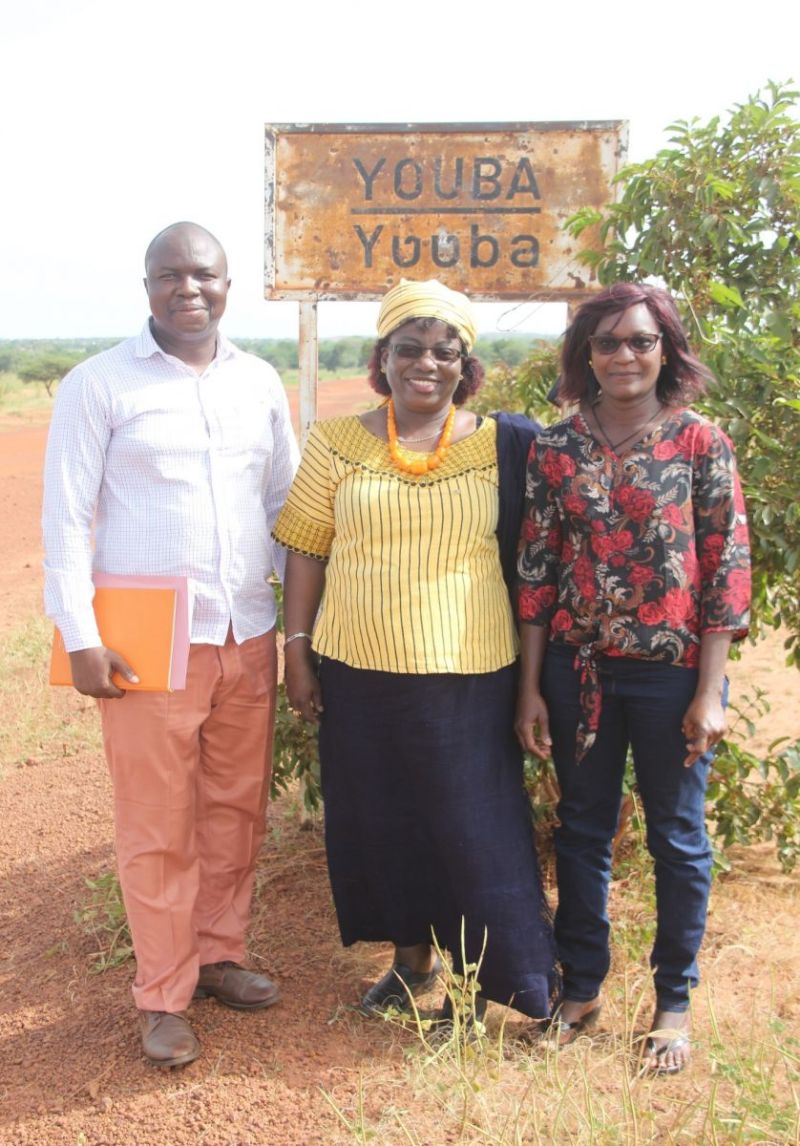
Interview about indigo practice with a focus group in Youba (7 October 2020)
Colour as Word, Virtue and Vehicle in Burkina Faso
The indigo tree is a wild, native species Burkina Faso and grows only when there is sufficient groundwater infiltration. It grows in the rainy season and, unlike its Asian counterpart, is not cultivated. The Songhay-speaking Maranse brought their specialized skills in dyeing as they settled in today’s northern Burkina Faso after the fall of the Songhay Empire in the 16th century.
Through researching indigo a team of researchers at INSS (Institute Of Science Des Sociétés) has tried to understand how this practice has enabled the Maranse to safeguard their original traditions and culture through migration. To shed light on how this indigo practice has developed the team has carried out qualitative field research in Nakamtenga in the Plateau Central Region. This was further supplemented by the collection of indigo tree samples in Nomgana for analysis at the IRSAT laboratory, and photo documentation of indigo tree species found in Burkina Faso.

Roll of traditional fabric held by Jocelyne Vokouma in Youba Market (Burkina Faso, 8 October 2020)
The team found that when leaving out of the Mande (Mali) the first place to welcome the Maranse was the village of Youba, located nine kilometers from Ouahigouya, in the Yatenga Province. As a Songhay people the Maranse came from a sedentary population who mainly settled along the Niger River. Djenné, Timbuktu and Gao were their ancient cities that became renowned hubs for Islamic culture and scholarship as well as refined craftsmanship until the fall of the Songhay empire. In this stratified society, some sub-groups specialized in specific skills and production processes. During the Moroccan invasion in 1591 the Maranse sought refuge in the mountain chain around their native Hombori area, leading them to settle in today’s Burkina Faso. From Youba they went on to relocate in major urban centers, where they established markets.

In Youba, young girls are well dressed with a mixed style: indigo (bottom) and modern cloths (top). They are dancing to welcome the research team of INSS (7 October 2020)
To date, indigo dyeing is considered Maranga (singular for Maranse) because this group cultivates the indigo tree and produces resulting dyes and dyed cloths. The Maranse are widely credited in Mossi - Burkina Faso’s largest ethnic group - villages for the very specialized knowledge and techniques, as well as the key traditions of cultivation and crafts related to indigo. In these Mossi villages it are the men who practice indigo dyeing. The first pits used for dyeing purposes have supposedly been dug by the Maranse with the help of the Mossi, who were the hosts at the inception of any indigo-related activity. Hence, there are still two distinct cultural groups that practice indigo dyeing; that is, the Maranse who initially transmitted their cultivation and production skills to the Mossi, and the Mossi.

From the left to right, Gnessi Siaka, Jocelyne Vokouma, Eulalie Zongo (the indigo project team at INSS)
While the Maranse still conserve certain cultural traits, such their language, that set them apart, they are very well integrated in Mossi society, that had warmly welcomed them on their initial arrival. They are usually fluently in Moore, the language of the Mossi. Maranse last names, such as Maiga (or Maigga), Meiga (or Meyga), Pafadnam, help identify them.

Dr. Ludovic Ouhonyiouè Kibora, INSS Director in front of an ancient indigo hole at an old dyeing site in Youba (7 October 2020)
Perhaps due to their status some Maranse also served as counselors in royal courts in the past. Given these historical ties linking them to the Mossi chieftaincy, and this tradition had availed them easy access to the palaces. There is indeed a Maranga (singular for Maranse) expression: “Marang pafad naam!”. That is, “A Maranga fears neither power, nor chieftaincy!”

In Youba children were happy to meet the researchers in their village. It was very joyous to see them come forward like this to say goodbye (7 October 2020)